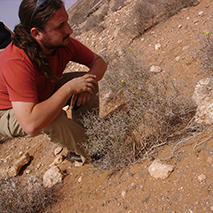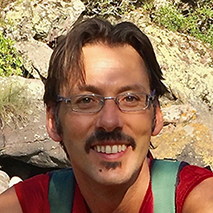Lichens are complex systems that, in addition to the mycobiont and the photobiont, harbor a diversity of organisms, including both bacteria and fungi other than the mycobiont. Among the lichen-inhabiting fungi the term “endolichenic” was coined to refer to endophytic-like fungi living asymptomatically inside lichens, whereas the term “lichenicolous” was generally used for mostly macroscopically visible fungi living on them. There are currently up to 2319 species of lichenicolous fungi described, which belong both in Ascomycota and Basidiomycota. Lichenicolous basidiomycetes include only a handful of generalists, and most taxa are very host-specific. The latter include, among others, genera in the Pucciniomycotina (
Chionosphaera and
Cyphobasidium) and in the Tremellomycetes (
Heteroacanthella, Heterocephalacria, Syzygospora and
Tremella s. l.). The Tremellomycetes as a group are also interesting in that they include, apart from lichenicolous fungi, representatives with a variety of nutritional habits, their actual diversity and evolution are still poorly known, and they exhibit remarkable coevolutionary patterns with their hosts. Host-specialization has in fact revealed as an important driver of speciation in lichenicolous basidiomycetes. Both
Cyphobasidium and
Tremella are dimorphic fungi, which means that they include a haploid yeast phase and a dikaryotic filamentous phase in their lifecycle, and it has recently been shown that species growing on Parmeliaceae are able to complete their life cycle within the lichen thallus. In the last years molecular phylogenetics, studies on character evolution, species delimitation methods and cophylogeny analyses have increased our understanding of these fascinating fungi. Relevant results on the diversity, systematics and evolution of lichenicolous basidiomycetes are presented, together with an outline for future prospects.
Photoinhibition is an unavoidable consequence of oxygenic photosynthesis. Light-induced inactivation of PSII represents a major limiting factor of photosynthesis and primary productivity in both terrestrial and aquatic environments. New paradigms have been proposed to explain the fundamental processes of photoinhibition, namely the relative importance of direct photoinactivation and repair of PSII, and the role of excess light energy vs inactivation of the MnCaO5 cluster as primary mechanisms of PSII photoinactivation. These shifts in paradigms were originally based on research done on specific groups of algae or cyanobacteria, but more recent evidence suggest that these views may not hold when tested against the large functional diversity of the various algal groups. Also older paradigms, long established from plant-based research are currently challenged by experimental evidence from various algae groups. Among these is the photoprotective role of energy dissipation processes (e.g. xanthophyll cycle, XC), questioned by their small contribution in effectively preventing PSII photoinactivation, and the discovery of fully functional XC-deficient monophyletic group of algae. Current uncertainties reside in part in difficulties in characterizing the large functional, phenotypical diversity present in cyanobacteria and photosynthetic algal protists. Ongoing developments in novel high throughput phenotyping platforms, based on bioimaging of photosynthetic traits, and the growing field of algal phenomics, are promising solutions.

Departament of Biogeography and Global Change, Museo Nacional de Ciencias Naturales (MNCN-CSIC), Madrid, Spain
Centre for Ecology, Evolution and Environmental Changes (cE3c), Faculdade de Ciências, Universidade de Lisboa, Portugal
Departamento de Ecologia, Instituto de Ciências Biológicas, Universidade Federal de Goiás, Goiânia, Brazil
Understanding the nature and dynamics of ecological communities is a key question in ecology. Evidence points to communities functioning both as relatively deterministic structures shaped by predictable local interactions, or highly dynamic entities determined by the environmentally-driven spatial dynamics of species. I aim at understanding the role of ecological interactions, environmental requirements, metacommunity dynamics and large-scale biogeographical processes as determinants of species coexistence across scales. To do this, I study the effects of two aspects of the niche concept (i.e. abiotic conditions and biotic interactions) and spatial processes in different systems through several collaborative research programs. We assess the responses of moss species using field and controlled to study how neutral competitive interactions and responses to environmental conditions determine species occurrence and local success. We also conduct detailed field work on dune xerophytic plant communities, assessing the effects of positive and negative interactions (i.e. facilitation and competition) on the distribution and local co-occurrence of species. Further, we use macroecological analyses and ecological niche models to study how climatic suitability and coexistence with other species determine the local success of each species. Finally, we develop theoretical models based on existing theory on the dynamics of local communities, metacommunities and species’ geographic ranges. These models are parameterized based on the aforementioned study systems, with the aim to obtain realistic outcomes from the stochastic simulations. I use the results of empirical analyses and theoretical models to describe the scaling of the different ecological processes that lead to the spatial and temporal dynamics of biodiversity gradients.
Do small organisms produce small responses? Is their function in the ecosystem negligible?
Being small, but extremely complex organisms, lichens can help answer these questions. During this plenary talk, the known responses of lichens to environmental drivers will be reviewed and their main ecosystem functions will be examined from the micro- to macro-environmental scale. Several research ideas will be proposed for future studies that connect the biological and ecophysiological knowledge on lichens with the investigation of broader ecosystem processes.



 Departamento de Biología y Geología, Física y Química Inorgánica y Analítica (ESCET), Universidad Rey Juan Carlos, Madrid, Spain
Departamento de Biología y Geología, Física y Química Inorgánica y Analítica (ESCET), Universidad Rey Juan Carlos, Madrid, Spain
 Departamento de Biologia, Universidade de Aveiro
CESAM - Centro de Estudos do Ambiente e do Mar | Centre for Environmental and Marine Studies, Aveiro, Portugal
Departamento de Biologia, Universidade de Aveiro
CESAM - Centro de Estudos do Ambiente e do Mar | Centre for Environmental and Marine Studies, Aveiro, Portugal
 Departament of Biogeography and Global Change, Museo Nacional de Ciencias Naturales (MNCN-CSIC), Madrid, Spain
Centre for Ecology, Evolution and Environmental Changes (cE3c), Faculdade de Ciências, Universidade de Lisboa, Portugal
Departamento de Ecologia, Instituto de Ciências Biológicas, Universidade Federal de Goiás, Goiânia, Brazil
Departament of Biogeography and Global Change, Museo Nacional de Ciencias Naturales (MNCN-CSIC), Madrid, Spain
Centre for Ecology, Evolution and Environmental Changes (cE3c), Faculdade de Ciências, Universidade de Lisboa, Portugal
Departamento de Ecologia, Instituto de Ciências Biológicas, Universidade Federal de Goiás, Goiânia, Brazil
 University of Genova, DIFAR, Genova, Italy
University of Genova, DIFAR, Genova, Italy